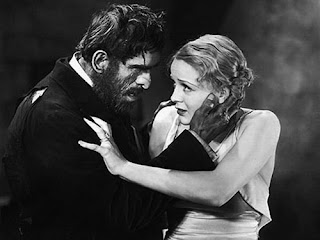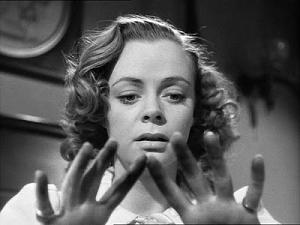Guillermo del Toro, 2013
Starring: Charlie Hunnam, Rinko Kikuchi, Idris Elba, Charlie Day, Ron Perlman
A crack has appeared on the floor of the Pacific Ocean and giant, otherworldly monsters known as kaiju begin to emerge and destroy the Earth. To retaliate, humans create the Jaeger, human piloted robots outfitted with a number of impressive weapons. These robots are too demanding for one human to pilot, so a team mentally merges (called Drifting) to pilot the Jaeger and take on kaiju. One of the most celebrated teams, Raleigh Becket and his brother, face off against an unexpectedly ferocious kaiju and Raleigh’s brother is killed.
Several years later, the kaiju have gotten out of control and the government plans to cancel the Jaeger project and try to build a protective wall near the ocean portal. Commander Stacker Pentecost ignores the order and decides to try a last, desperate attack with the four remaining Jaegers. The fourth Jaeger needs pilots and Pentecost tracks down Raleigh and convinces him to return. They try out a number of potential partners, but Raleigh wants Mako Mori, a young Japanese woman who is the brains behind Pentecost’s project. For unknown reasons, Pentecost does not want her to become a pilot, but time is running out as the kaiju attacks become more frequent and more fearsome.
I’m a big fan of del Toro, though sometimes I think I enjoy him more as a person and fellow fan than I do as a director. I really liked Cronos (1993), The Devil’s Backbone (2001), and Hellboy (2004), and enjoyed Pan’s Labyrinth (2006), and Hellboy II: The Golden Army (2008), despite its issues, and was far more entertained by Blade II (2002) than I probably should have been. My biggest issue with him is that I don’t think he’s particularly good at developing characters, a problem that is certainly evident with Pacific Rim.
To play devil’s advocate with myself for a second, the movies that inspired Pacific Rim, such as Godzilla and other kaiju films, also don’t traditionally focus on the script and many of the human characters are two dimensional and forgettable. But this is OK because Godzilla films generally focus on one thing: Godzilla and other kaiju stomping the living shit out of things. All those movies ask you to care about are the kaiju and generally unveil scene after scene of fiery destruction. Pacific Rim, on the other hand, does have a lot of robot/monster fight scenes, but focuses precious little on the kaiju and more on the humans. And unfortunately the humans leave a lot to be desired.
One of my biggest issues with Pacific Rim is the sheer amount of exposition in the first half hour of the film. I respect that del Toro attempted to totally set aside an origin story feel, but this immensely long movie crowded with underdeveloped characters all fighting for screen time would probably have been better served as a two part film. With the sheer amount that happens in the film, it would make sense to further develop a richer, longer story rather than rush everything at breakneck speed towards the conclusion. As a result, we are left with a series of cookie cutter characters, many of whom have absolutely nothing at stake, particularly Raleigh (Sons of Anarchy’s Charlie Hunnam), who is one of the two main protagonists. We know almost nothing about him, other than his brother/co-pilot was killed during a kaiju battle several years ago and he has some unresolved trauma. Despite the character’s significant amount of anger, frustration, and unresolved PTSD, he is pretty passive and has absolutely zero character development. This begs the question: Why wasn’t Raleigh called in sooner if he is such an impressive pilot? He gets over his trauma remarkably fast and the script quickly leaves him behind to focus on Mako, his co-pilot.
I grew up loving Neon Genesis Evangelion and various Gundam series, so it’s nice to see someone do giant robots piloted by humans right, though del Toro is rehashing a lot of what these earlier series have already explored and skimming over the more complex elements. While series like Evangelion and Gundam Wing explore the physical and psychological effects of piloting a massive, weaponized robot, Pacific Rim barely touches upon this and uses it mainly to fluff out back story or provide a character with more obstacles. The Drift, for example, could be a far more powerful tool than it is. Instead it is only used twice, both times to quickly explain a character’s past trauma. Simply giving a character trauma does not equate complexity or development. One of the things Gundam Wing, for example, does particularly well is introduce a lot of characters who pilot these robots and provide them all with varying degrees of depth. They also each have very personal relationships with their robots, effectively humanizing the machines, something Pacific Rim also unfortunately fails to do.
The pacing of the film - with constant nighttime fight scenes in the rain - destroys any sense of tension or the notion that something (the world) is at risk. Part of the problem is the number of two dimensional characters who are barely present in the film, such as the Russian couple and the Chinese triplets, supposedly bad ass fighter pilots who are killed far too quickly before we can either come to like them as characters or appreciate their skills as fighters. And the names, my god the names. Stacker Pentecost, played by one of my favorite current actors, Idris Elba, is almost completely wasted by the script’s constant attempts to undermine his abilities as commander. Characters frequently disobey or ignore his command, making him ineffective until he steps up to the plate to become a pilot himself. Why doesn’t Pentacost, often shown as a solid, unemotional commander, put Mako, whom he calls his biggest asset, in the fight sooner? The explanation for this (she is his foster daughter) is flimsy at best, as the entire world is about to erupt in apocalypse and Mako would die anyway.
Max Martini and Rob Kazinsky are decent as the father and son piloting team and Rinko Kikuchi shines as Mako, the film’s true protagonist. I am grateful to del Toro for refusing to sexualize Mako. Instead, he presents her as an intelligent and vital member of the time, as well as being a gifted fighter. Her relationship with Raleigh is troubled, as the film nearly gives them a romantic subplot. Del Toro mostly avoids this, outside of some awkward scenes of her checking out Charlie Hunnam’s abs while he changes his shirt. Fortunately the film leaves things ambiguous and ends with a scene of them hugging, grateful they have accomplished their mission and somehow both survived, instead of relying on a cliched kiss.
It is nice to see moments of del Toro’s humor, which doesn’t shine nearly as brightly as in Hellboy, but makes a few appearances in the form of Charlie Day (It’s Always Sunny in Philadelphia), as a kaiju-obsessed scientist. While I enjoyed Day’s character, he feels cut into the film and would be more satisfying if he was better integrated into the main plot. His scenes with Ron Perlman, playing black market kaiju parts dealer Hannibal Chau, are some of the most delightful and represent the best dialogue in the film, which is a little unfortunate, considering that they are only side characters.
The real reason I went to see Pacific Rim was for the creatures, both the kaiju and the robots that del Toro has named “Jaeger.” They all look fantastic and the kaiju veer dramatically away from Godzilla or Harryhausen territory and decidedly more towards the Lovecraftian. It was a little frustrating that they are primarily shown them in the rain, water, or darkness, and their phosphorescence is never explained, but they are still a welcome distance from recent creature features. The Jaeger, though underrepresented, are far more impressive than Michael Bay's awful Transformer films.
Despite my complaints, Pacific Rim is worth seeing and has been getting rave reviews. As long as you can get past the weak script and sparse, unsatisfying attempts at character development, you will be pleasantly entertained. I thought about deleting my entire review and changing it to say “Giant robots fight giant monsters, what more do you want and what more can you expect?” And to a certain extent, this is very true.
















